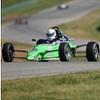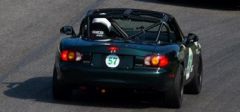
How to level scale pads
#1

 Posted 12-30-2012 08:30 AM
Posted 12-30-2012 08:30 AM

Thanks
Greg

#2

 Posted 12-30-2012 08:47 AM
Posted 12-30-2012 08:47 AM



#3

 Posted 12-30-2012 09:40 AM
Posted 12-30-2012 09:40 AM

What Brian said above.. What I do is start with one pad and a small 1-2 ft level.. Continue checking front to rear and side to side. I then continue on and level the other three. Once you have 4 level pads, you need to level each pad with each other, all in the same plane. It is easier once each pad is level. You can just raise or lower each of te next pads say one turn each( all four corners of each scale) I use a 6 ft level and check each scale with the other three. If I had to choose, I would prefer all four pads on the same plane than four perfectly level individual scale pads.
My guys hate leveling the scale pads.. The common phrase at my shop " are the scales level?" Is that your "level" or my "level' ? I really try to make sure the bubble is perfectly centered in every direction
Jim
East Street Auto Parts
Jim@Eaststreet.com
800 700 9080













#4

 Posted 12-30-2012 09:54 AM
Posted 12-30-2012 09:54 AM

1) Please describe your platform(s). Are your four corners connected to each other (via beams)? Or are they four individual, stand alone platforms?
2) Are you doing this in your garage (where you'll be doing future scaling), or are you asking about a process to use at the track?
I agree with Jim's comments, however, I do believe it's not a problem if the front pads are a little higher or lower than the rears, as long as the two fronts are level to each other and the two rears are level to each other.


#5

 Posted 12-30-2012 10:57 AM
Posted 12-30-2012 10:57 AM

#6

 Posted 12-30-2012 11:27 AM
Posted 12-30-2012 11:27 AM

I am doing this in my shop, and this will be our primary location of scaling and doing the set-up work. They are 4 individual scale pads, they are not connected.
Greg

#7

 Posted 12-30-2012 12:44 PM
Posted 12-30-2012 12:44 PM

I was going to suggest what George suggested, but he beat me to it. :-).Russ,
I am doing this in my shop, and this will be our primary location of scaling and doing the set-up work. They are 4 individual scale pads, the are not connected.
Greg
I have also written down (on the pads, on racer's tape) how many turns each adjuster is from its lowest setting.
Like others have suggested, level each pad in all directions (make sure they are sturdy - don't rock), then use a long, accurate straight edge to level the four pads with each other. Once done, if you have it right, the straight edge should touch everywhere (nowhere to slip in a thickness gauge) and the bubble should be centered, no matter where you set it.
At one point in time I thought (incorrectly) that I could turn the car around and measure it both ways to confirm accuracy and repeatability, but then it dawned on me that if the scales themselves had "jacking", then it doesn't matter if the car is facing one way or the other - It will still show the same non-50% weight jacking. :-(.
That theory would only have worked if the car's track and wheelbase was the same, and you could measure it facing north, east, south and west. :-).


#8

 Posted 12-30-2012 12:59 PM
Posted 12-30-2012 12:59 PM

If you can't get your corner weights to repeat consistently (after bouncing the car), that indicates your suspension has resistance somewhere. That "stickyness" can adversely affect grip.
I believe that to be true, but don't claim to have the skill to say I could recognize it on the track.


#9

 Posted 12-30-2012 01:14 PM
Posted 12-30-2012 01:14 PM

http://philstireservice.com Enkei Team Dynamics The Miata Wheel Motegi Apex Wedsport Hoosier Toyo BFG Michelin Nankang Federal
#10

 Posted 12-30-2012 01:15 PM
Posted 12-30-2012 01:15 PM

EDIT: After reading Phils comment, I'll add that at someone elses race shop where they used a laser level set, we found the water level to be more accurate.



#11

 Posted 12-30-2012 01:24 PM
Posted 12-30-2012 01:24 PM

There is an added benefit to measuring how level the pad locations sit to one another before you start to level the pads. If you know which spot on the floor is the highest, you can start leveling your setup there and raise all the others to that height. If you don't, you could get most of the way through your setup and find you can't lower one or more pads far enough and have to raise the ones you just leveled back up again.



#12

 Posted 12-30-2012 01:30 PM
Posted 12-30-2012 01:30 PM

They use a dab of silicone and glue them to the floor. Then wherever you level the scales, can be re-created very easy.
Stock car guys use them a lot in garage areas at the track as they don't have room for full drive on scale platforms and have to move the scales each time. Better and much more accurate than just paint marks.
AiM Sports National Training Manager
#13

 Posted 12-30-2012 01:36 PM
Posted 12-30-2012 01:36 PM

#14

 Posted 12-30-2012 02:05 PM
Posted 12-30-2012 02:05 PM

I agree with Jim's comments, however, I do believe it's not a problem if the front pads are a little higher or lower than the rears, as long as the two fronts are level to each other and the two rears are level to each other.
You bring up a good point that is almost always overlooked - it is much much much much more important that the scales be "flat" (in a plane) with respect to each other, than they be "level" (with respect to "the horizon" or "whatever").
Having said that, a water level is the easiest way I've found, and if they are level with each other then they are necessarily flat.
However, sometimes you don't have enough shims or leveler adjustment to be level, especially when in a shitty paddock area (ahem, Drago/Stearns, Pro Miata Cup @ Mid O, year 200X) so you make the scales flat and the % cross won't care if one side or one end is even 0.5" low or high. But, one corner out of plane by even 0.1" and you are going to get bogus numbers. To some extent it doesn't matter, because the best drivers make adjustments based on feel almost every session, not based on absolute scale numbers - and 0.1" of tire stagger is going to screw things up just as much as 0.1" of one scale being out of plane.
For faster reply than PM: miataboxes>>>AT<<<gmail>>DOT<<<com
#15

 Posted 12-30-2012 02:18 PM
Posted 12-30-2012 02:18 PM

If you can't get your corner weights to repeat consistently (after bouncing the car), that indicates your suspension has resistance somewhere. That "stickyness" can adversely affect grip.
You make another good point - especially if the obvious issue of "slip plates" have already been addressed.
The scale "stickiness" of the '99+ versus the other cars was my first clue that Mazdaspeed (their supplier, really) had screwed up the original pre-FatCat tophat setup. I spent two days one the scales trying to figure out why the '99+ was +/- 0.8% or so on the scales, with no changes but a bounce or two. An NA car was +/- 0.2% at worst. In both cases we're talking perfect tires with perfect stagger, with slip plates, and with the ARBs disconnected.
The second clue was when 99+ cars started needing shock rebuilds 4-10x faster than the NA cars.
The 3rd clue was when the shock shafts broke off a few of the early 99+ builds.
And the 4th clue was when I removed a '99+ rear lower shock bolt while on the scales and the shock went "Sprroooinnnngggg" outboard about 3/8".
The original super-stiff tophat setup converted the shock absorber (and the body sheetmetal where it bolted to) into a bizarro leaf spring that just happened to be mounted more vertically than horizontally. Really bad "engineering".
Anyway, when an SM is "sticky" on the scales, what I notice is the car is hesitant to take a set and unrepeatable in "dicey" corners with delicate weight transfer - like sweepers, kinks, etc. Mid O T1, T11, and the fast LH'er into the Carousel come to mind. But you don't notice it in sharp turns and switchbacks with big wheel movements and fast/large weight transfers.
For faster reply than PM: miataboxes>>>AT<<<gmail>>DOT<<<com
#16

 Posted 12-30-2012 02:31 PM
Posted 12-30-2012 02:31 PM

At one point in time I thought (incorrectly) that I could turn the car around and measure it both ways to confirm accuracy and repeatability, but then it dawned on me that if the scales themselves had "jacking", then it doesn't matter if the car is facing one way or the other - It will still show the same non-50% weight jacking. :-(.
Unless I'm misunderstanding you, your "theory" is absolutely valid and I do it all the time. The SM is not a 4-legged stool with 4 equal corner weights. It is sitting on 4 springs, with different effective spring rates front and rear, and different corner weights all around.
So - forget the % cross, but the individual corner weights should indeed be nearly the same whether you point the car forward or backward.
Once you put the car on backwards as a check, you can finish the job in that position - just make sure you change the scale wiring or % cross display to match the "backwardsness" or you are in for a long day
For faster reply than PM: miataboxes>>>AT<<<gmail>>DOT<<<com
#17

 Posted 12-30-2012 02:49 PM
Posted 12-30-2012 02:49 PM

Haha... been there, done that!!
- Jim Drago likes this
AiM Sports National Training Manager
#18

 Posted 12-30-2012 03:11 PM
Posted 12-30-2012 03:11 PM

To clarify my statement earlier about verifying corner weights by turning the car around:
What I meant was, it's not a good way to tell if your scales are level.
For example, let's say I screwed up and the LF scale pad was too high by 1/4". That would make my LF-RR corner weights appear higher than they actually are. If I turn the car around (north-south), I will see the same thing, so that exercise did not tell me my scale platforms were off.


#19

 Posted 12-30-2012 07:30 PM
Posted 12-30-2012 07:30 PM

Great discussion, all good points
To clarify my statement earlier about verifying corner weights by turning the car around:
What I meant was, it's not a good way to tell if your scales are level.
For example, let's say I screwed up and the LF scale pad was too high by 1/4". That would make my LF-RR corner weights appear higher than they actually are. If I turn the car around (north-south), I will see the same thing, so that exercise did not tell me my scale platforms were off.
I think I understand what you are saying - but I still think you will only get the same scale results North vs. South if the scales are indeed level - and you will get different scale results North vs. South if the scales are not level - so I think the test is still OK.
Let's think of it another way - imagine the car on level scales. If you throw a 1/8" shim under the LF tire, you will get different scale numbers than if you throw that same shim under the RR tire - mainly because the wheel rates are different and the CG isn't right on the diagonal - like a wobbly stool, the car will lay heavier on the "soft" corner on the side the CG falls within, taking most of the delta off it's diagonal partner. In both cases, the car will squat onto the LR and lift the RF - but your % cross will be higher with that 1/8" shim under the stiffer LF than with the shim under the softer RR.
Still - it takes less than a minute to check the scales with the standard "jackstands+PVC tubing" water level, so we might be outsmarting ourselves here
- Glenn likes this
For faster reply than PM: miataboxes>>>AT<<<gmail>>DOT<<<com
#20

 Posted 12-30-2012 07:46 PM
Posted 12-30-2012 07:46 PM

0 user(s) are reading this topic
0 members, 0 guests, 0 anonymous users




 Sign In
Sign In Create Account
Create Account




 Back to top
Back to top Report
Report









